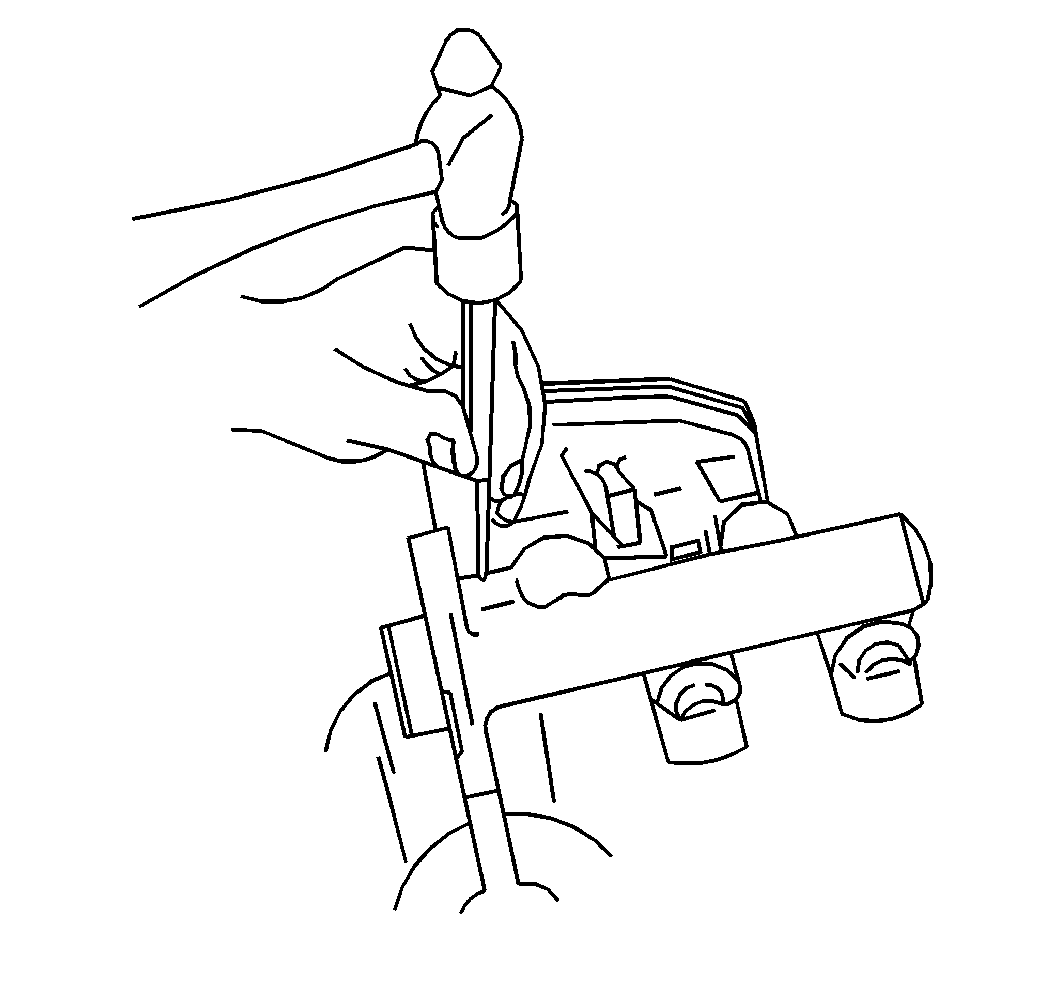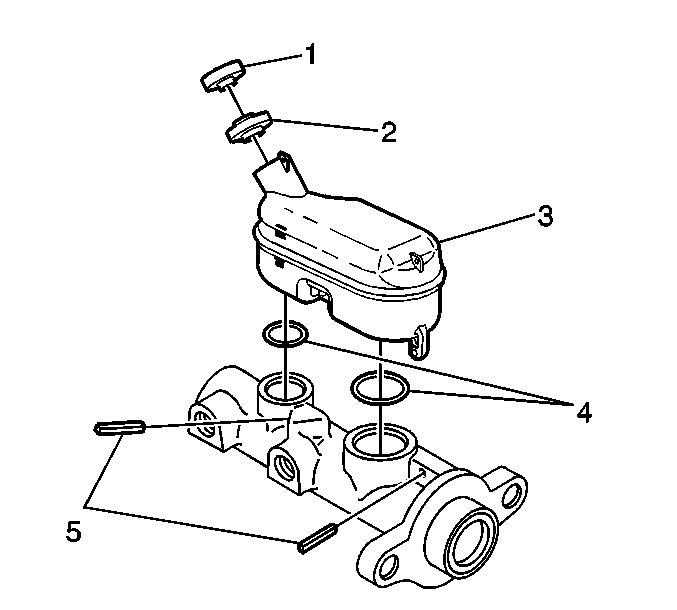For 1990-2009 cars only
Removal Procedure
Caution: Refer to Brake Fluid Irritant Caution in the Preface section.
Notice: Refer to Brake Fluid Effects on Paint and Electrical Components Notice in the Preface section.
- Remove the master cylinder. Refer to Master Cylinder Replacement .
- Clamp the flange on the master cylinder body in a vise. Do not clamp the master cylinder body.
- Drive out the spring pins. Use a suitable punch. Do not damage the reservoir or the cylinder body when pushing out the pins.
- Remove the reservoir body (3) by pulling the body straight up and away from the cylinder body.
- Remove the O-rings (4) from the grooves in the reservoir.
- Inspect the reservoir for cracks or deformation. Replace the reservoir if necessary.
- Clean the reservoir. Use clean denatured alcohol.
- Dry the reservoir. Use non-lubricated compressed air.
Notice: Do not overtighten vise, or damage to the master cylinder will result.


Installation Procedure
- Lubricate the new O-rings and the reservoir-to-housing fittings. Use clean brake fluid.
- Insert the O-rings (4) into the grooves in the reservoir. Ensure that the O-rings are properly seated.
- Install the reservoir (3) to the master cylinder body. Use your hand in order to push the reservoir straight down into the body.
- Install the spring pins in order to retain the reservoir. Do not damage the reservoir or the cylinder body.
- Install the master cylinder. Refer to Master Cylinder Replacement .


